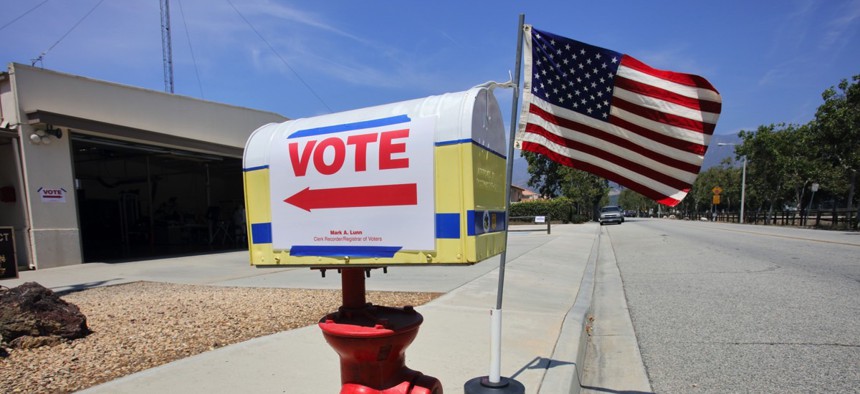Voter Information on Government Websites Still Fails Basic Accessibility Tests

Are inaccessible features on government websites making it harder for people with disabilities to vote?
There are 11 weeks until Election Day.
Navigating government websites in search of voter information isn’t always the easiest task. Now imagine trying to find out where to vote, find a sample ballot, or fill out a registration form on one of these sites if you’re blind or visually impaired, or you can’t use a mouse or touchpad as a result of a physical disability.
Perkins Access, an Watertown Massachusetts-based accessibility consulting group connected with the Perkins School for the Blind carried out an assessment review of 25 state websites and the digital properties of several large cities throughout the country.
What did they find?
Eighty percent of the voting-related webpages that the team from Perkins examined contained elements that do not meet the accessibility requirements of the Web Content Accessibility Guidelines 2.0.
“We were a little surprised that it was voter information and voter registration pages that seemed to have more failures than state home pages and some of the other agencies that we looked at,” said Bill Oates, the former chief information officer with the city of Boston and the commonwealth of Massachusetts governments who is the current vice president of Perkins Solutions.
These failures may be as simple as providing a document in PDF format only—which aren’t machine readable—or not properly including image description text, but they hinder citizens with disabilities from being able to easily get the information they need.
“Governments are becoming much more digital in terms of how they provide information, how they provide their services,” Oates said. “Going digital is a great opportunity but it can also create new obstacles.”
It’s unclear just how much these obstacles have prevented people with disabilities from fully participating in the democratic process, but this community has seen lower registration rates as well as lower turnout rates compared with groups without disabilities.
A study of the turnout statistics from the 2012 elections conducted by researchers from Rutgers and Syracuse universities found that 15.6 million people with disabilities reported voting in November of that year.
Registration rates for people with disabilities in 2012 were 2.3 percentage points below that of people without disabilities.
The turnout rate for people with disabilities was 5.7 percentage points lower than that of people without disabilities. All told, there would have been 3 million more voters with disabilities if there were perfect parity in the turnout rates.
So what can governments do to make critical voter information easier to navigate for citizens with disabilities?
According to Oates, the first step is to make this issue a priority. “As a former CIO I always relate accessibility to some of the challenging issues state CIOs face, like IT security.”
As Oates explained, if you were to ask CIOs in government about their top 10 priorities, keeping up with security challenges always falls at the very top of the list. Something like cyber security is incredibly complex and the real problem is that threats in that realm are constantly changing. Less so with accessibility.
“When I look at accessibility it’s very different,” Oates said. “We know what we need to do to make our digital properties more accessible and more usable by folks with disabilities. So it really is a matter of just prioritizing it, paying attention to it.”
As Route Fifty has previously written, this issue is getting more attention from state and local governments in part because of an uptick in accessibility-related settlements with the U.S. Department of Justice.
The second major step in creating and maintaining a successful accessibility strategy hinges on proper training—for internal staff, as well as for contractors and third parties that may be responsible for designing government web properties.
Oates and his team at Perkins Solutions believe that part of that training process should require those building and curating websites to experience the Internet from the perspective of someone with a disability.
For example, this video from Perkins School for the Blind shows what a webpage might be like for a person with a visual impairment who uses a screenreader.
“As much as people talk about the challenges of accessibility, until you actually listen to that experience from the perspective of someone who is using a screenreader it’s kind of hard to understand,” Oates said. “But when you listen to what that experience is like on a site that hasn’t been well designed, you can just imagine how frustrating it must be for someone who that’s their only path to get that information.”
“Everybody wants to have more citizen engagement,” he said. “And in our view, when you talk about citizen engagement, you really need to include everybody, and everybody means everybody.”
“Folks with disabilities, they really want to get involved,” Oates continued. “They want to be more engaged as citizens, they want to be more engaged as voters.”
PREVIOUSLY on Route Fifty:
Quinn Libson writes for Government Executive’s Route Fifty.
NEXT STORY: Local Government Performance Guru Heads Back to Louisville






